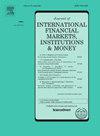主权信用评级下调,经济增长面临风险
IF 6.1
2区 经济学
Q1 BUSINESS, FINANCE
Journal of International Financial Markets Institutions & Money
Pub Date : 2025-06-25
DOI:10.1016/j.intfin.2025.102195
引用次数: 0
摘要
本文基于Adrian等人(2019)的风险增长框架,研究了主权信用评级变化是否与未来宏观经济下行风险增加有关。我们的研究结果显示,评级下调显著增加尾部风险,将未来四个季度GDP增长的第5个百分位数降低2.95个百分点,而评级上调的影响较小,且不一致,为0.45个百分点。标准面板OLS结果显示,评级下调后,对GDP增长的影响降低了1.11个百分点,这突显了检验均值以外影响的重要性。进一步的分析表明,在分位数和时间范围内,这种影响是不对称的,投机级国家尤其容易受到评级下调的影响。所有主要评级机构的评级下调都会影响尾部风险,其中惠誉的负面影响最大,而只有穆迪的评级上调才会产生显著影响。此外,我们的经验证据表明,信用评级下调的影响至少在一定程度上可以通过采用后全球金融危机监管改革来缓解,这些改革与这些政策的目标相一致,以减少对评级机构的依赖并增强金融稳定性。最后,我们的分析指出,投资和主权债券利差是评级下调影响宏观经济结果的关键渠道,然而,只有后者与GDP增长的下行风险显著相关。鲁棒性测试包括内生性检查、额外控制、替代CRA数据和分位数回归方法,证实了我们的发现。本文章由计算机程序翻译,如有差异,请以英文原文为准。
Sovereign credit rating downgrades and Growth-at-Risk
This paper examines whether sovereign credit rating changes are linked to increased future macroeconomic downside risks based on the Growth-at-Risk framework by Adrian et al. (2019). Our findings reveal that downgrades significantly increase tail risk by lowering the 5th percentile of four-quarters ahead GDP growth by 2.95 percentage points, whereas upgrades yield a smaller and inconsistent effect of 0.45 percentage points. Standard panel OLS results show a reduced impact of 1.11 percentage points on GDP growth following a downgrade, underscoring the importance of examining effects beyond the mean. Further analysis reveals an asymmetrical impact across quantiles and time horizons, with speculative-grade countries particularly vulnerable to downgrades. Downgrades from all major agencies affect tail risk, with Fitch having the largest negative impact, while only Moody’s upgrades have a significant effect. Moreover, our empirical evidence suggests that the effect of credit rating downgrades is, at least partially mitigated, by the adoption of post-GFC regulatory reforms, aligning with these policies’ aim to reduce reliance on CRAs and enhance financial stability. Lastly, our analysis identifies investment and sovereign bond spreads as key channels through which downgrades affect macroeconomic outcomes, however, only the latter is significantly associated with downside risks to GDP growth. Robustness tests that include endogeneity checks, additional controls, alternative CRA data and quantile regression methodology, confirm our findings.
求助全文
通过发布文献求助,成功后即可免费获取论文全文。
去求助
来源期刊
CiteScore
6.60
自引率
10.00%
发文量
142
期刊介绍:
International trade, financing and investments, and the related cash and credit transactions, have grown at an extremely rapid pace in recent years. The international monetary system has continued to evolve to accommodate the need for foreign-currency denominated transactions and in the process has provided opportunities for its ongoing observation and study. The purpose of the Journal of International Financial Markets, Institutions & Money is to publish rigorous, original articles dealing with the international aspects of financial markets, institutions and money. Theoretical/conceptual and empirical papers providing meaningful insights into the subject areas will be considered. The following topic areas, although not exhaustive, are representative of the coverage in this Journal. • International financial markets • International securities markets • Foreign exchange markets • Eurocurrency markets • International syndications • Term structures of Eurocurrency rates • Determination of exchange rates • Information, speculation and parity • Forward rates and swaps • International payment mechanisms • International commercial banking; • International investment banking • Central bank intervention • International monetary systems • Balance of payments.

 求助内容:
求助内容: 应助结果提醒方式:
应助结果提醒方式:


